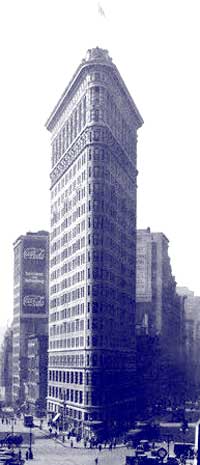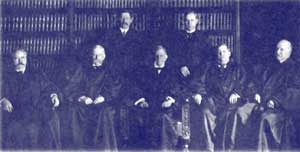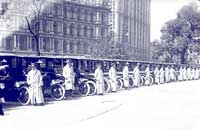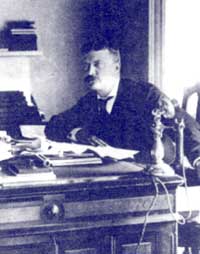Hon. Dianne T. Renwick, Presiding Justice
Susanna Molina Rojas, Clerk of the Court
1900 - 1919



Associate Justices Frank C. Laughlin, George L. Ingraham, Presiding Justice Edward Patterson,
Associate Justices Chester B. McLaughlin, John Proctor Clark.
Standing: Associate Justices James W. Houghton, Francis M. Scott.


circa 1920
The new Bench early on struggled to establish rules of law that would provide guidance as to the Court’s power to review lower court cases. That power proved very broad, and eventually, in 1945, the Court was fully endowed with the power to make new findings of fact as well as of law.
Certain early appeals to reach the Court were the product of the same fervor for reform that led to the Court’s creation. These were cases by those former city police officers whom the new “firebrand” Police Commissioner, Theodore Roosevelt, had dismissed from the force for corruption or incompetence.

Theodore Roosevelt
Over the coming decades, reformers would come to challenge the very heart of the power structure that governed New York. Meanwhile, they would sigh with relief when the notoriously corrupt attorney, Abraham Hummell, was disbarred by the Appellate Division. For decades Hummell and his partner, William Howe, had corrupted witnesses and jurors alike to obtain an impressive and highly suspect acquittal rate in criminal cases. Hummell subsequently left the country.
The coming century seemed to hold great promise for the Court and for New York. Young Americans were coming from rural areas to find better-paying work in the City, and making their homes in buildings newly divided into separate apartments. At the same time, a great immigrant wave from Southern and Eastern Europe multiplied the City’s population. In 1900 that population was 3.4 million; thirty years later it had increased to over 7 million. This growth necessitated an expansion of the City’s superstructure and public transportation.
In 1902, the Flatiron Building was built on Broadway and Fifth Avenue, opposite the Appellate Division Courthouse. At 21 stories, it became the symbol of the New York skyline.
The growth of the City resonated in several cases heard in the courtroom at 21 Madison Avenue. A 1909 plan to upgrade the City’s water supply resulted in litigation, as did a 1920 dispute over the contract to build the East River Bridge. The Court heard and decided cases concerning the growth of railroads, the subway system, the building of the 42nd Street library, and the regulation of motorized taxi fares. In a 1900 case, the Appellate Division had permitted the Soldiers’ and Sailors’ Memorial to be placed in Riverside Park.
One result of the growing population of industrial workers was the growth of the New York labor union movement. The international Ladies Garment Workers Union, founded in 1900, had been unable to prevent widespread sweatshop conditions of the sort that resulted in the tragic Triangle Shirtwaist Factory fire in 1911. But in 1914, the Appellate Division upheld that portion of the New York State Labor Law that forbade factory work done by women after 10 PM or before 6 AM. Union activity by the ILGWU and others was carefully monitored by the the Court.